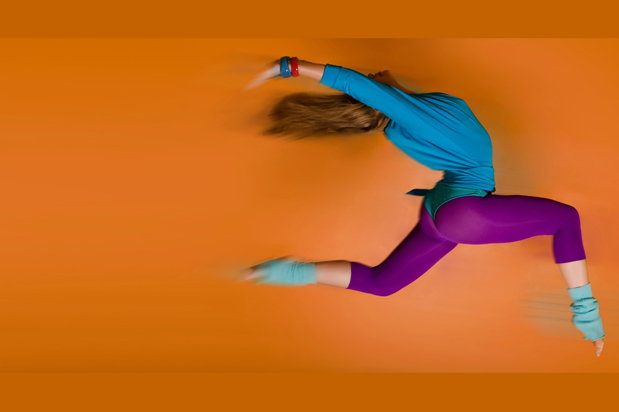The first time I started dancing was at the age of three. It was an amazing experience, as I allowed my body to move in ways it had never thought of before. I began to release all of my emotions through the motions. I started with ballet, but, over time, my repertoire increased, and I began to learn other dance forms as well. Ballet was always my favorite though, as it was my first experience ever dancing. I progressed rapidly, rising through the levels of my school until I had to join a more elite school. By sixteen, I was getting company contracts and full scholarships to programs. I loved it, as it was my language and speech. I was an introvert and extremely shy in public, so the only way I released my emotions was through dance. Language, for me, was moving my body.
An Inner Battle
I had always had a low body image and had struggled since the age of nine to eat a normal diet and maintain a steady weight. I would go through episodes of extreme restricting for months, then switch to periods of binging. Sometimes this cycle would progress where I would binge and immediately alleviate the guilt by “purging” the food from my body in a variety of ways. By seventeen years of age, my behaviors caught up to me. That November, I was hospitalized for anorexia, bulimia, and binge eating disorder. I was twenty pounds underweight and at high risk of an arrhythmia due to my extremely slow heart and low weight.
During the beginning of my stay at the hospital, I was not participating in groups or private sessions, and I was not being cooperative during meals. Feeling constrained because I was put on a high exercise restriction, I sank into an even deeper depression. One day, my main therapist mentioned Dance Movement Therapy in one of our sessions. She thought it would be a breakthrough for me and recovery. I was hesitant at first, but eventually gave in due to my therapist’s tenacity for the idea.
When I walked into my first dance movement therapy session, I saw a small, red-headed therapist, dressed the same as any dance instructor. Once she started playing the music, I immediately connected with my body and allowed my emotions to rush out of me. I was able to speak through my body instead of forming my thoughts into words. There were no restrictions to the way I could move, and I allowed myself to embrace the feelings I had kept inside for so long. I had two more after the first one. Each one helped me connect with myself more and more. I was able to begin recovery and fully participate in my treatment. I became more positive and upbeat. The effects were incredible.
What is Dance Movement Therapy?
According to the American Dance Therapy Association, the definition of dance movement therapy (DMT) is “the psychotherapeutic use of dance and movement in a creative process, which furthers the individual’s physical, emotional, cognitive as well as social integration[1].” From then on through the rest of my hospital stay, it was a part of my weekly routine. Dance therapy allowed my body to express itself without having to put any words or labels to the way I was feeling. My body is more in tune with my emotions than my brain can be at times. Before I even realize I am scared, my back has already hunched over and my palms are sweaty. Allowing my body to move how it feels is the easiest way for me to release the thoughts hidden in my mind. I felt more positive even after my first session, and, eventually, my depression lifted.
Research also supports the positive results of dance movement therapy. In the Asian Pacific Journal of Cancer Prevention (APJCP), dance movement therapy is analyzed for possibly being effective in fighting cancer in afflicted individuals [2]. According to the researchers, DMT “increase[s] special neurotransmitter substances in the brain (endorphins), which create a state of wellbeing.” They also write that this type of treatment can be used to treat a multitude of illnesses, such as, “physical problems such as amputations, traumatic brain injury, and stroke, chronic illnesses such as anorexia, bulimia, cancer, Alzheimer’s disease, cystic fibrosis, heart disease, diabetes, asthma, AIDS, and arthritis.”
Coping Through Artistic Expression
Researchers conclude the APJCP article by writing, “Dance, being the most fundamental and unique form of art, affects people spiritually first. Then it refines them socially and physically. As a form of therapy it does not only help people with chronic illnesses; it also, helps socially and physically abused people to cope with their emotion, anger and frustration, on a mental level.” As one of the oldest and most singular art forms, dance gives the ability for everyone to perceive and interpret differently within themselves, and it allows the body to speak without forming any cognizant, linguistic thoughts.
Once I was released from the hospital, I discovered that dance movement therapists were far and few between. Unfortunately, I wasn’t able to find one covered by insurance in my hometown. Though I never had another dance therapy session since, it has been one of the most helpful and beneficial forms of therapy that I have encountered in my own recovery journey.
If you or someone you know is seeking help for addiction, please visit our directory of treatment centers or call 866-606-0182 to start the path to recovery today.
References
1. American Dance Therapy Association. Retrieved online on January 2017 via https://adta.org/faqs/
2. Dance as a therapy for cancer prevention. Retrieved online on January 2017 via https://www.ncbi.nlm.nih.gov/pubmed/16236009
3. Healing Through Movement: Dance/Movement Therapy for Major Depression. Retrieved online on January 2017 via https://academiccommons.columbia.edu/catalog/ac%3A144824








